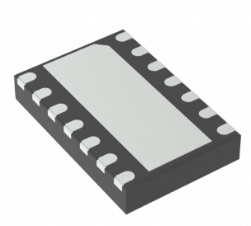- Online chat

MCP6292T-E/MS
The MCP6292T-E/MS is a dual-channel, high-speed operational amplifier from Microchip Technology, designed for precision signal conditioning in low-voltage applications. Housed in an 8-pin MSOP package, this device operates from a single supply voltage range of 2.4V to 5.5V, making it ideal for battery-powered and portable systems. The MCP6292 series features rail-to-rail input and output capabilities, ensuring wide dynamic range and compatibility with analog-to-digital converters (ADCs) and other low-voltage interfaces.
Key Features
This op-amp delivers a gain-bandwidth product (GBP) of 10 MHz and a slew rate of 7.5 V/µs, enabling fast response for high-frequency signals. It exhibits low input offset voltage (typically ±150 µV) and low input bias current (0.5 pA), minimizing errors in precision measurement circuits. The MCP6292T-E/MS supports true rail-to-rail input and output operation, extending signal swing to the supply rails for enhanced performance in constrained voltage environments. It operates over an extended temperature range of -40°C to +125°C, ensuring reliability in harsh conditions. With a quiescent current of 850 µA per channel (typical), it balances power efficiency and performance.
Applications
Commonly used in sensor interfaces, medical instrumentation, and industrial control systems, the MCP6292T-E/MS excels in applications requiring accurate amplification of small signals, such as in data acquisition systems and transducer conditioning circuits. It is also suitable for audio equipment, communication devices, and consumer electronics where low noise and stable gain are critical. Its low-voltage operation and compact footprint make it ideal for space-constrained designs, including portable devices and IoT nodes.
Summary
The MCP6292T-E/MS combines high-speed performance, precision, and low-power efficiency, making it a versatile solution for applications demanding reliable signal amplification in low-voltage environments. Its rail-to-rail architecture and robust temperature tolerance facilitate seamless integration into a wide range of systems, from battery-operated portable devices to industrial automation. This makes it an essential component for engineers designing circuits requiring both accuracy and energy efficiency across diverse operating conditions.








